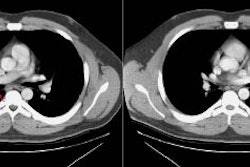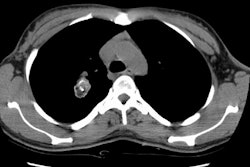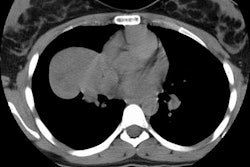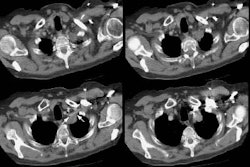Eur Respir J 1999 Dec;14(6):1376-80
Value of FDG-PET in detecting residual or recurrent nonsmall cell lung
cancer.
Bury T, Corhay JL, Duysinx B, Daenen F, Ghaye B, Barthelemy N, Rigo P, Bartsch P.
In order to evaluate the usefulness of 18-fluorodeoxyglucose (FDG) positron emission
tomography (PET) in the assessment of therapeutic effects, a study was performed before
and after therapy in 126 patients with non-small cell lung cancer (NSCLC) codified stage I
to stage IIIB. Treatment with an early curative result was given in 58 patients, whereas
in 68 cases it was limited to palliation. During the treatment follow-up period (8-40
months), each patient was evaluated every 3 months by clinical examination and < or =6
months by imaging techniques (PET and computed tomography (CT)). A diagnosis of persistent
or recurrent tumour was established by means of pathological analysis in 31 patients and
by clinical evolution and subsequent imaging progression in 29 other patients. PET showed
increased FDG uptake in all cases (n = 60) of persistent or recurrent tumour, whereas CT
was nonspecific in 17 cases. Conversely, there were five false positive cases via PET
imaging and three via CT. In detecting residual or recurrent NSCLC, PET had a sensitivity
of 100% and specificity of 92%, whereas CT had a sensitivity and specificity of 71% and
95% respectively. In conclusion, 18-fluorodeoxyglucose positron emission tomography
correctly identified response to therapy in 96% (121 of 126) of patients. Positron
emission tomography appears to be more accurate (p = 0.05) than conventional imaging in
distinguishing persistent or recurrent tumour from fibrotic scar in patients undergoing
treatment for non-small cell lung cancer.
PMID: 10624770



